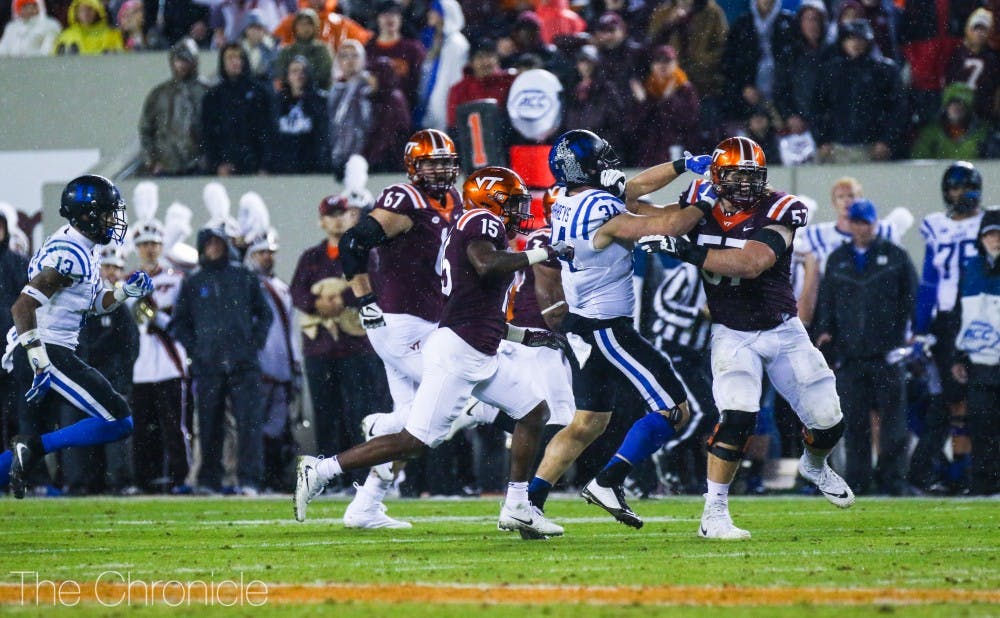Eighty-one yards against N.C. Central, 56 against North Carolina, 40 against Miami, 42 against Florida State and 92 against Pittsburgh.
Saying that explosive plays on the ground have burned the Blue Devils would be an understatement. This season, Duke has allowed six touchdown runs of more than 40 yards in just nine games, and what began as a strength for the Blue Devils has become their biggest liability.
After giving up a mere 88 yards per contest in its first six games and riding its rush defense to a stellar 4-0 start, Duke has been unable to contain its opponents for the last three contests. The Blue Devils have allowed more than 250 rushing yards per game during that span and desperately needs to turn that trend around against an Army team that has gained more than 92 percent of its yardage on the ground this season.
Despite a lack of a passing game—the Black Knights are last in the nation with a mere 266 yards in the air this season—Army has implemented the triple-option offense to perfection, leading the nation with 365.4 yards per contest.
The triple-option offense involves three men in the backfield—usually the quarterback and two running backs—who share the load and could each carry the ball on every play.
The Black Knights have six players with at least 175 rushing yards this season and have used their misdirection plays to gain an average of more than six yards per rushing play. Quarterback Ahmad Bradshaw leads Army with 1,132 rushing yards and is tied for the team lead with eight touchdowns.
Bradshaw is coming off a career-high 265-yard rushing performance against Air Force Saturday, in which he gained more than 18 yards on five separate occasions. The Chicago native’s longest run came on an explosive 48-yard dash.
Note the mayhem at the line of scrimmage caused by the three men in the backfield and the space that allowed Bradshaw to take off downfield.
Much of the reason teams have success with the triple option is due to its scarcity throughout college football. Georgia Tech is the only other team the Blue Devils face that uses a triple-option system.
Duke last saw the triple option in Atlanta last season in its 38-35 loss to the Yellow Jackets. The Blue Devils were unable to stop the variety of looks from the Georgia Tech offense, allowing 341 yards on the ground—including this 82-yard touchdown run by former Yellow Jackets quarterback Justin Thomas.
As you can see once again, movement in the backfield acted as bait for the Blue Devil defense. Once Duke bit, Thomas had a window to run and took advantage of the situation.
For the Blue Devils to snap their five-game losing streak, they will need to sit tight and identify who the real ball-carrier is, rather than fall for constant fake outs and misdirections. If Duke continues to take the bait, it could lead to another frustrating outing for the Blue Devils' defensive unit.
Get The Chronicle straight to your inbox
Signup for our weekly newsletter. Cancel at any time.
Digital Strategy Director for Vol. 115, Michael was previously Sports Editor for Vol. 114 and Assistant Blue Zone Editor for Vol. 113. Michael is a senior majoring in Statistical Science and is interested in data analytics and using data to make insights.

